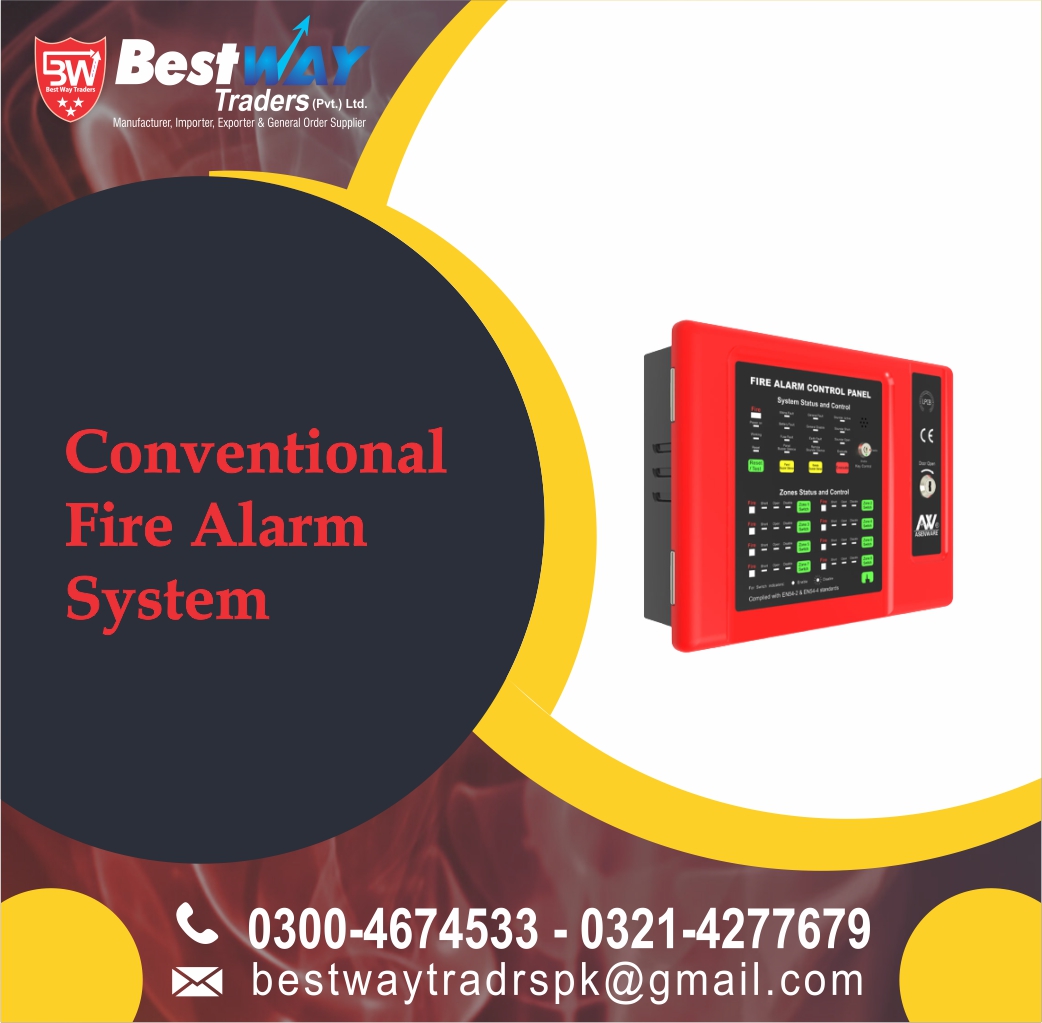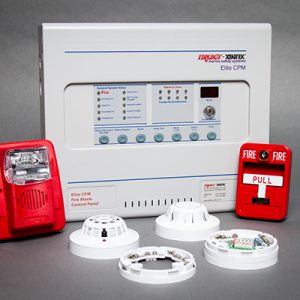Description
Addressable or Conventional Fire Alarm System?
So you are looking to install a fire alarm system in your building. The question, however, is which approach should you take? Should you go with the simple conventional fire alarm system? or the more intelligent addressable fire alarm system? In this article, we will discuss the pros and cons of both types of systems in the hope of assisting with the best method for you and your project.
Conventional Fire Alarm System
Let us start with the simplest of the two systems. A conventional fire alarm system is a fire alarm system wired using a radial method (single legs of cable). These radials are wired from the main fire alarm panel and are either fire alarm zones or sounder circuits.
Fire alarm zones are the radial circuits that monitor the detectors and manual call points. These zone circuits can accommodate multiple detectors and call points on each radial circuit.
Sounder circuits are the radial circuits that control the fire alarm sounders and Visual Alarm Devices (VADS). These circuits can accommodate multiple sounders, but they are generally limited to each sounder’s power consumption, along with how much output the panel offers on each sounder circuit.
Due to the conventional system’s simplistic form, should a fire or fault occur, it will only highlight a fire/fault in that area (on the specific zone). It cannot identify precisely where the fire outbreak is or which specific detector has registered a fire/fault. It only identifies which zone has the fire or circuit fault. The problem with a conventional system is that it makes fault finding time consuming for fire alarm engineers. It means an extended time on site and, in hand, more costs when repairing the system despite the lower price of the fire alarm devices and fire alarm panels.
As a conventional system uses separate radial circuits for both detectors and sounders, the installation cost can sometimes be more than an addressable system. It is due to the amount of cable used, which can be significantly more than the addressable system.
Conventional systems are pretty basic in electronics due to their simplistic nature. Therefore, the build cost is considerably less than an addressable system. The small price to produce the equipment means it is cheaper for the consumer to buy. It makes a conventional system an affordable solution to a fire alarm system in smaller projects like shops, small offices and small schools.






Reviews
There are no reviews yet.